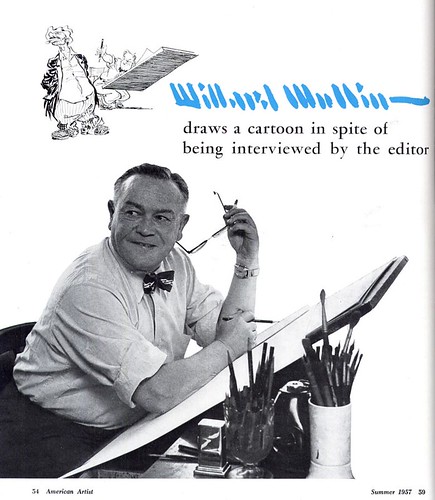
Twenty years earlier, during the 1937 baseball season, Willard Mullin was leaving a Brooklyn Dodgers game. He had just watched the team split a double header. By winning the first game the Dodgers had climbed into the upper half division, but by losing the second they fell back where they had been. Mullin was climbing into a cab bound back to Manhattan when the cabbie inquired, "Well, how did our 'bums' do?"
It was, for Mullin, an epiphany.
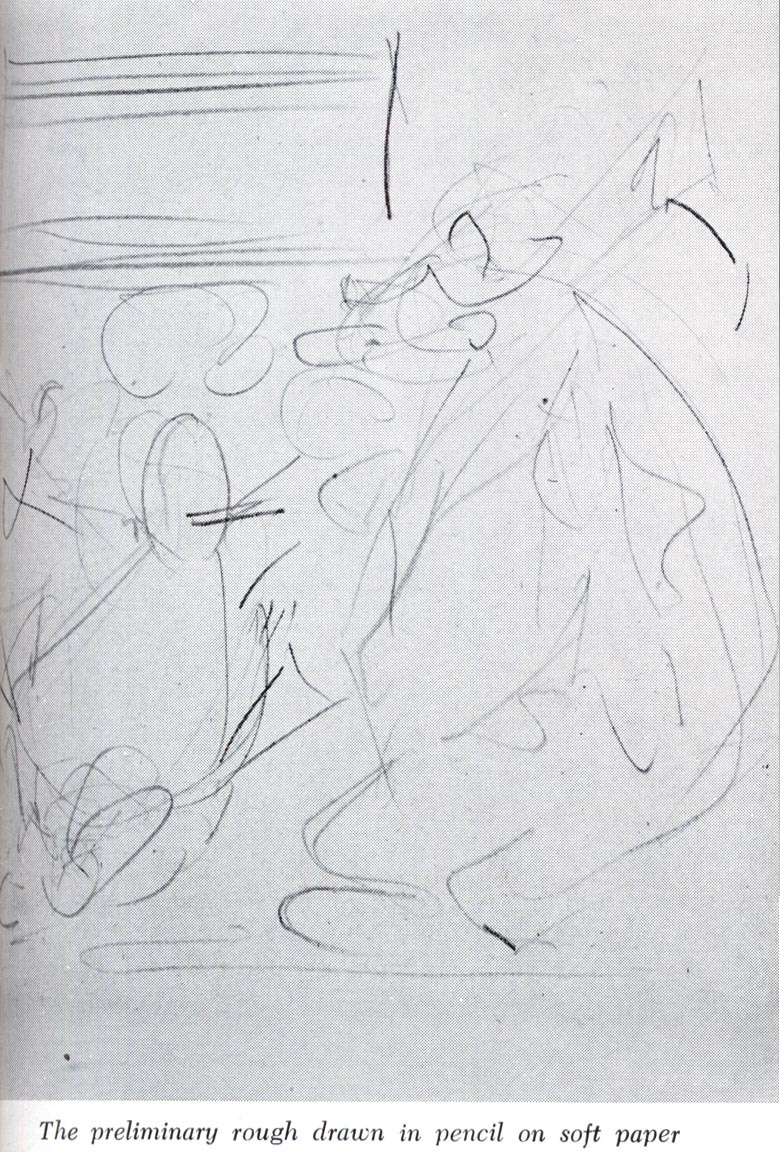
In the pages of the Scripps-Howard newspapers that ran his cartoons, Mullin had already characterized (with affection) the Dodgers as a clown - and now, with a little refining, he decided to recast the team as a 'bum'. Twenty years later the lovable "Brooklyn Bum" was still going strong, his expressions and attitudes, his circumstances and situations, rising and falling in conjunction with the Dodgers' fortunes.
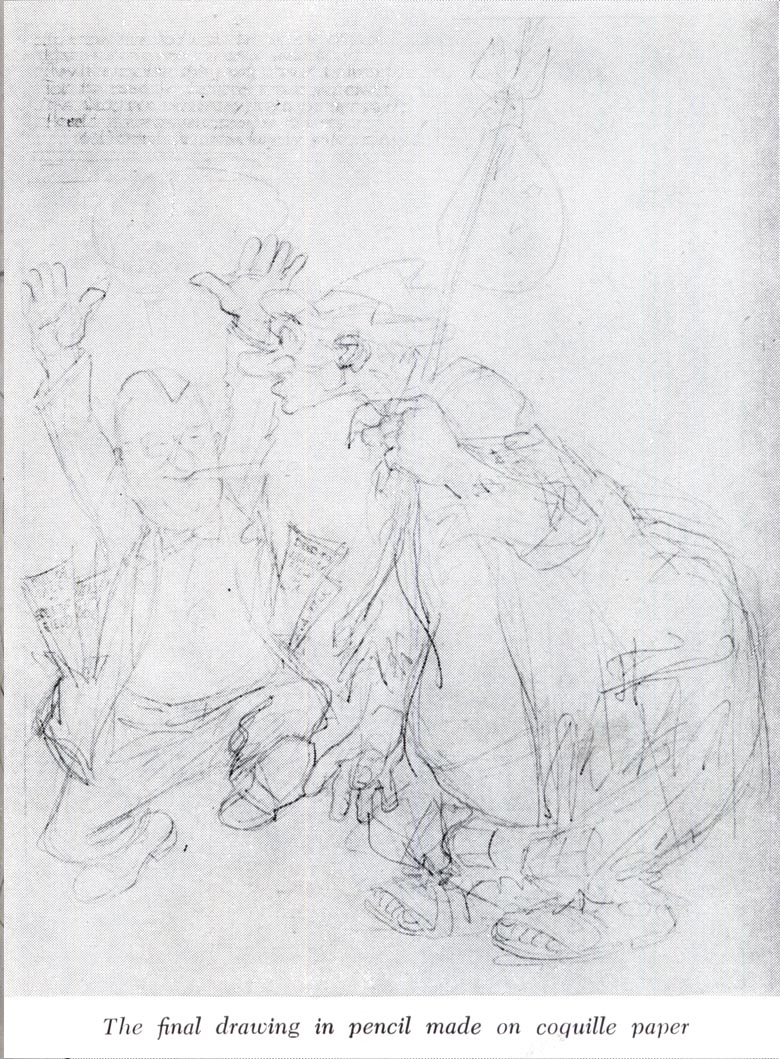
While the step-by-step doesn't reveal anything unexpected (Mullin's technique and materials were, as Norman Kent described "simple in the extreme"), its still always fun to see the process of a talented artist's work taking shape.
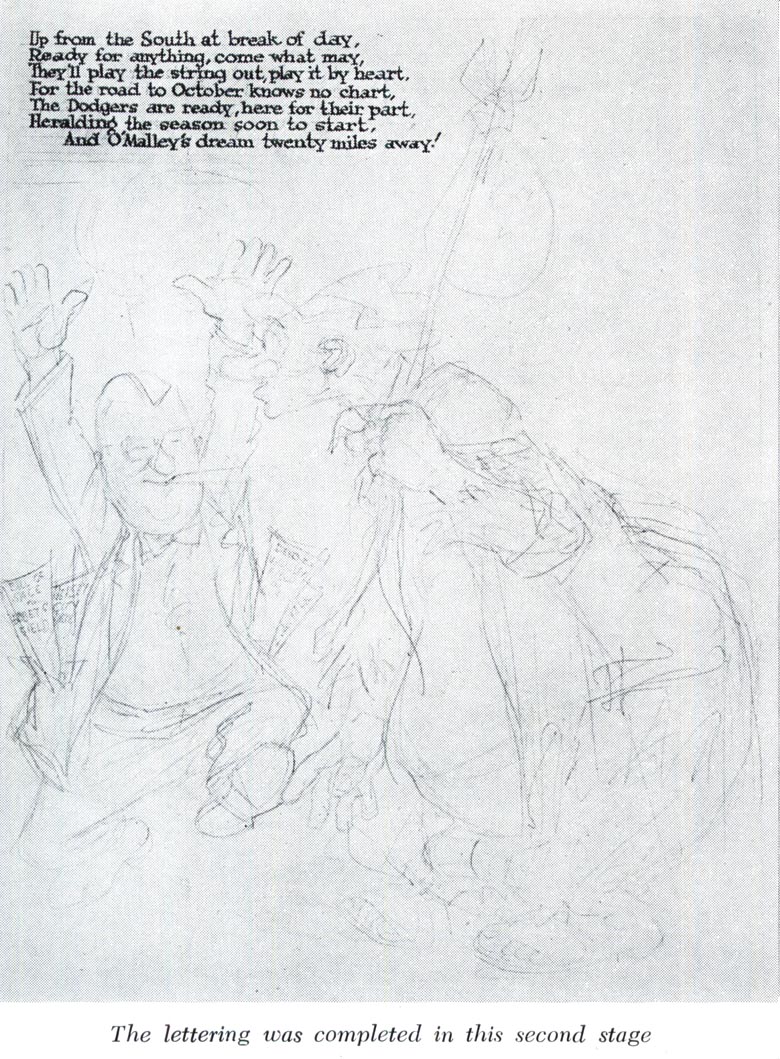
One interesting note is that Mullin credits his early experience working in the sign shop of an L.A. department store as providing the beginnings of his skill at lettering.
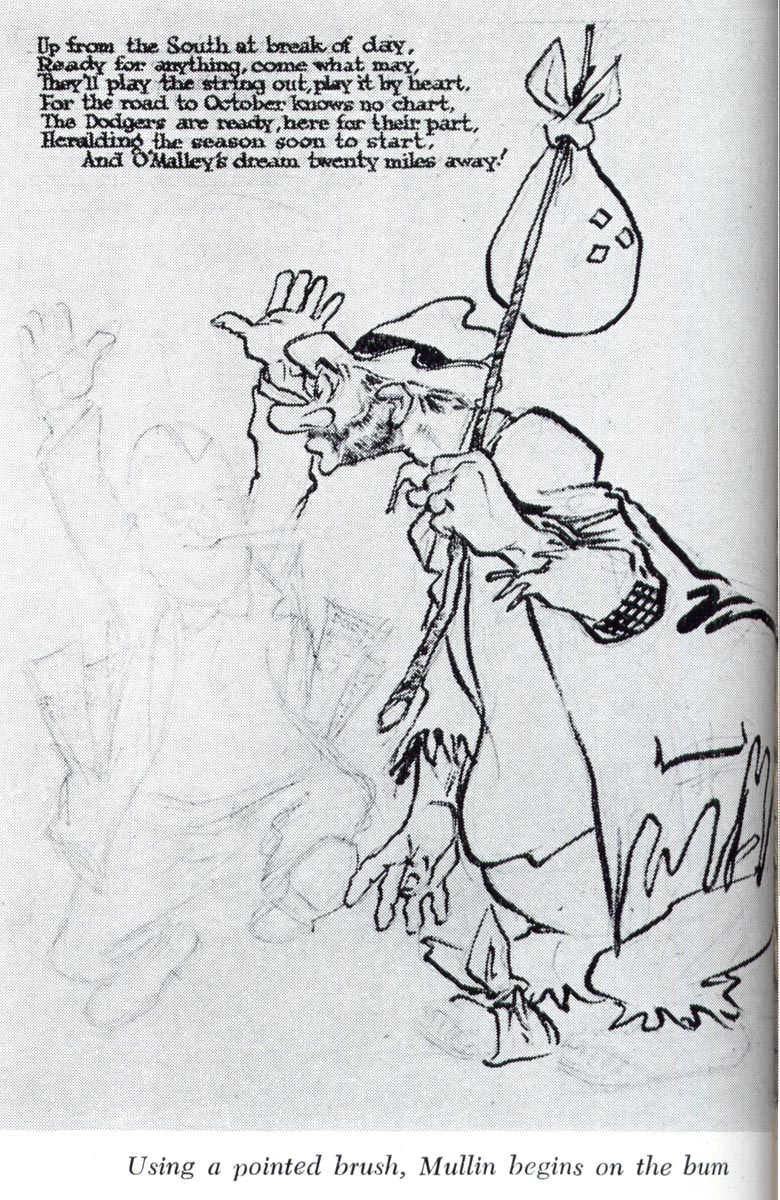
The drawing, an actual assignment for the New York World-Telegram, was begun at 11:00 a.m. that day under the watchful eye of the AA photographer and interviewer Norman Kent.
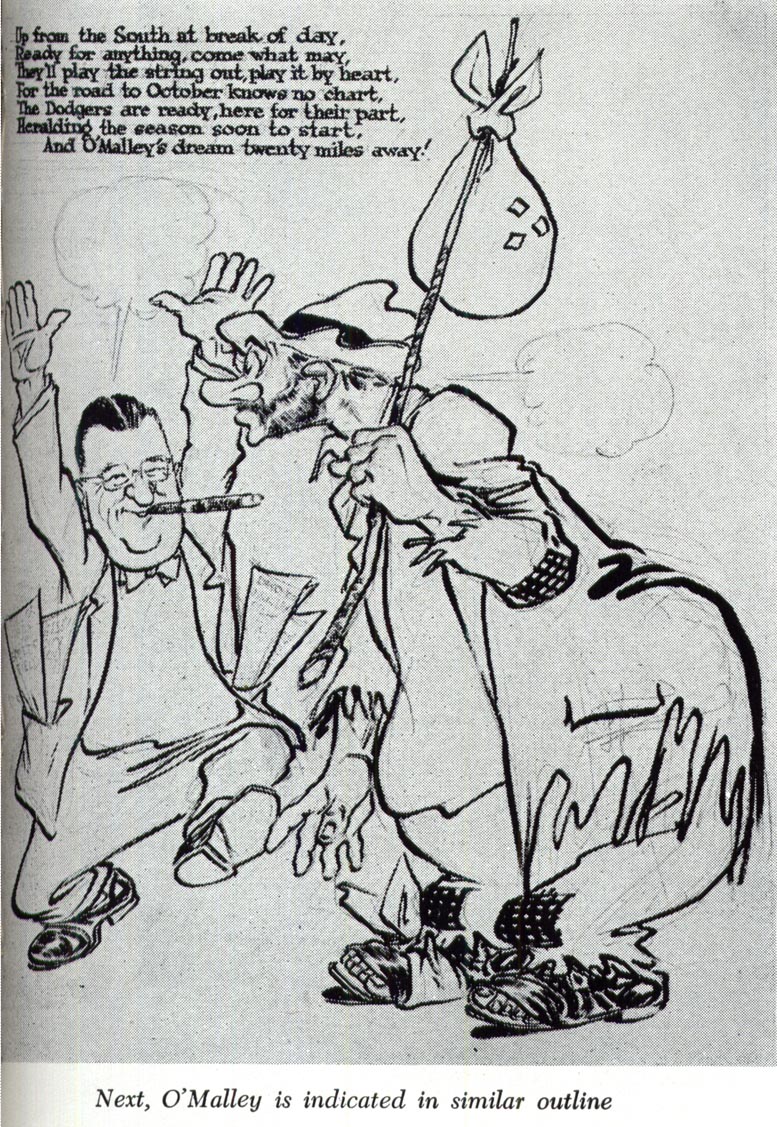
Kent describes the events of the day unfolding, "over a period of the next two hours, interrupted by conversation, photography, and a pleasant break for luncheon."
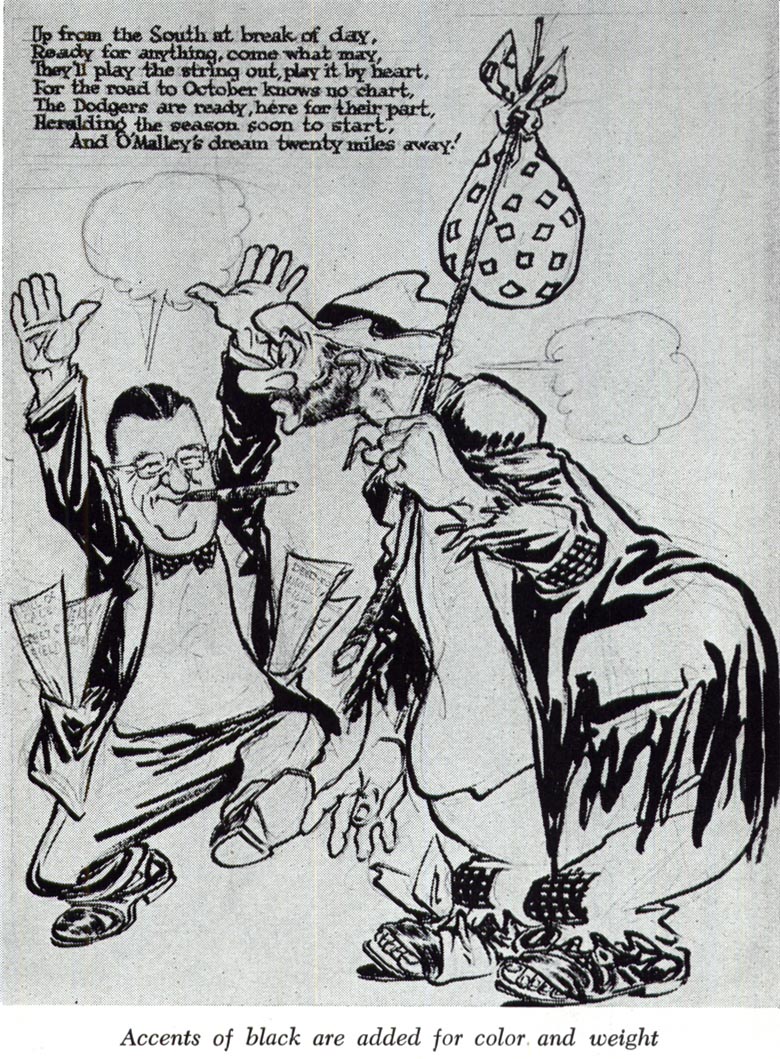
"With the final lettering added to the 'balloons' and the papers in O'Malley's pockets, the drawing was finished. after a few minutes of critical appraisment, Willard added a few penciled notes to the engraver in blue pencil, rolled up the drawing, encased some folding money under a rubber band, and dashed off to the railroad station - a block away."
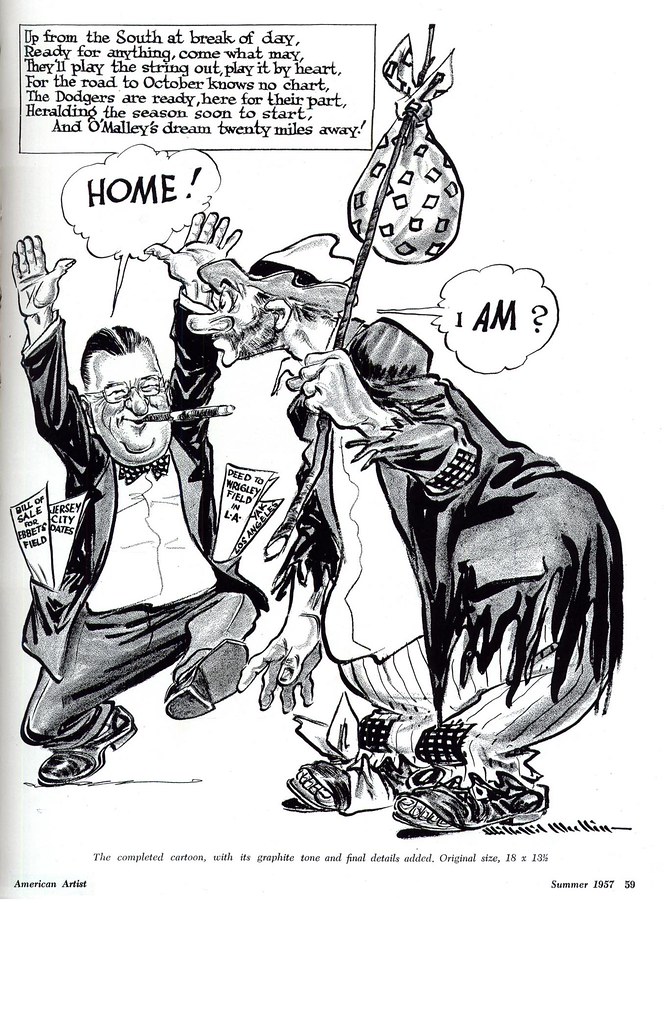 "As the 3:50 train for New York pulled in, he handed the drawing to the conductor, who happily removed the 'fee'. On arrival in New York, the conductor would take it to Western Union in Pennsylvania Station."
"As the 3:50 train for New York pulled in, he handed the drawing to the conductor, who happily removed the 'fee'. On arrival in New York, the conductor would take it to Western Union in Pennsylvania Station."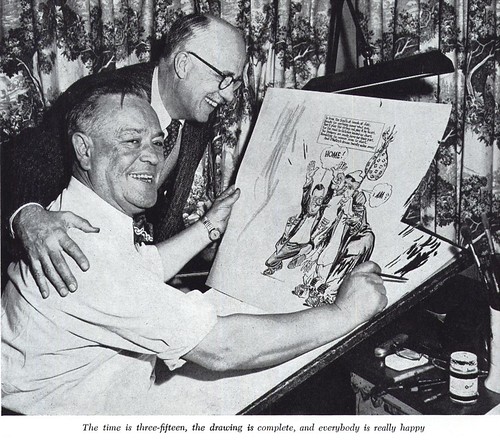
"A few minutes thereafter, the drawing would be delivered by messenger to the engraving department of the paper to be 'shot' for next day's edition. It appeared on schedule in the World-Telegram and Sun on Friday, April 12, [1957]."
* My Willard Mullin Flickr set.
* Also, don't forget to stop by Charlie Allen's Blog for the latest installment of the CAWS.
* And be sure to visit Harry Borgman's new blog for his latest post!
No comments:
Post a Comment